The Coleco Chameleon was advertised as a new video game console that would play cartridge-based games (both new homebrew releases and existing retro products). Devised in large part by Mike Kennedy, the name behind both RETRO Magazine and GameGavel.com, it seemed like a project poised to attract at least a few console collectors out there. Of course, if you’ve heard the name discussed lately online then you likely know all of this did not come to fruition. A Kickstarter that was advertised for February 26, 2016 failed to materialize and, as of now, that appears to be the end of the story. But what all took place to get us to the point where people have labeled the Chameleon and its creators scammers and fraudsters? Is this warranted? We need to go back to the beginning of this ridiculous story to see why this is the case.
It all began with a dream borne within the RETRO company to create their very own video game console. Thus far, the brand had only been applied to their magazine of the same name which had been Kickstarted not once but twice since 2013. Although it’s not directly related to this discussion, the magazine has been in limbo since the end of 2015 for reasons unknown to backers and basically anyone outside of the main team. Okay, so back to the topic at hand. They decided to create a console and labeled it the Retro VGS, or the Retro Video Game System. This system was advertised primarily via Twitter and Facebook and some folks out there were immediately interested.
I was one of these people. To be fair, I’m the sort which is willing to buy any sort of handheld or console even when it’s pretty obvious that it won’t survive very long. For example, it has been quite a challenge for me to avoid buying items such as the OnLive box or Ouya just to “have them.” It didn’t seem likely to me that many indie developers would honestly push their own games onto a new platform (which would require much more work then porting a PC game to, say, the Xbox One). In any case, I wanted one badly. The system stayed tucked away in my memories for a while until the moment it was announced the Retro VGS was going to seek crowdfunding via Kickstarter. Yes, this would be my moment to snag one!
Things changed course, however. Delays went on, and then in September 2015 a message suddenly appeared in which Kennedy stated that they would actually be using Indiegogo. Unfortunately for folks like me writing articles of this nature, almost all official Facebook and Twitter posts for Retro VGS/Coleco Chameleon have since been deleted. The best sourcing I can offer in this instance are direct quotes as pulled by forum members on Atari Age. So, the reasoning behind the switch of crowdfunding platforms was due to Indiegogo “courting” Retro VGS. But then they also said the following:
“In addition, we have also had discussions with Kickstarter about their policy which requires hardware campaigns to show off explicit demonstrations of a prototype. We have since found a few running hardware campaigns on Kickstarter that show nothing of the sort and have questioned them about it, only to find you really don’t need to show a working prototype, just to be clear and upfront with backers so they know exactly where you are in the development process. We asked if they would then reword their policy to reflect this and at this point they have not done so.”
Basically, one of the key reasons they opted for Indiegogo was because they do not require projects to show a working prototype. As such, the Indiegogo finally went live on September 19. As should be obvious from my news post at the time, I was still excited for the prospect of this darn console. Although I never went through with it, my plan was to honestly back at a tier which offered up one of their limited edition clear top Retro VGS units. The reason I never backed was because the campaign completely stalled out after day one. Nobody cared to back the thing and it never even got close to its $1.95 million goal.
The reasons for a lack of interest varied, but there’s no doubt some of it had to do with the fantastical notions of the supposed development team. For one, this system was meant to be purely old-school in the sense that there would be no internet connectivity. So, what would happen if a game released for the Retro VGS had a game-breaking bug? According to Kennedy, game designers would be “instructed to give us bug free games.” Yep, that’s totally how it works! Another issue was the price of the console, up from its original estimates up to $349. Then there was the reality that we didn’t get to see any sort of prototype. There were certainly a lot of mockup visuals, though. Even if you run an Indiegogo project, people’s Kickstarter expectations can and do bleed onto Indiegogo. The team severely underestimated what savvy crowdfunding consumers expect and they failed.
While the Indiegogo was already acknowledged as dead and buried (but unable to be immediately canceled), a prototype video of the Retro VGS was released. Unfortunately, this may have been the worst idea possible as AtariAge user galax revealed what the components in the clear Jaguar case were and that things weren’t as they seemed. The video was promptly removed from YouTube which only furthered the belief that what people had uncovered was true. In October, Kennedy took to the AtariAge forums and spoke candidly about the issues the Retro VGS suffered. Although he never confirmed that the original unit was fake, he did state that they would have “a playable prototype and it will be on Kickstarter,” suggesting they certainly never had one to begin with. After all this drama and a failed crowdfunding campaign under their belt, things finally started to cool down… Well, for a little bit, anyway.
Things got revved up again the Retro VGS site banner was changed ever so slightly so that the branding on the Jaguar case now said “Coleco Chameleon.” At this point, folks who had already been keeping tabs on the project and its related drama couldn’t help but react. After all, this could have been a turning point for Kennedy and company, or it could be the continuation of bad decisions. Many websites covered the Coleco Chameleon anew and with no regard for the storied past of the unit. The reason for this is most likely that they had a slow news day, were given a press release for the Chameleon, and just put it out there. So while the general public continued to live unaware of the stuff brewing beneath the surface, retro collectors and hardcore gamers kept a more cautious eye on the system’s progression.
This reached a boiling point at the New York Toy Fair. Coleco had a booth and, alongside their own new bartop arcade toys, sat a Coleco Chameleon prototype underneath a clear plastic cube. It was a brand new prototype (the second shown thus far) and looked fairly messy. Unlike the high quality prototypes expected at any function, this Jaguar shell had a fair bit of electrical tape keeping it together. Not only that, in an interview with developer Piko Interactive on Retro Gaming Roundup, he stated that the system kept resetting itself. Those who listen to a lengthy interview with said developer will find that he eventually recognized the system to be a SNES Mini running a SD2SNES cartridge rather than anything they actually created themselves. Many other eagle-eyed gamers had pieced these parts together even before Piko Interactive arrived at the fair, and all together it proved damning.
Yes, it’s true that video game companies have been known to pull such stunts in the past. Oftentimes, when a new console is on the horizon, they may demonstrate gameplay or footage running off a hidden PC and present it as console footage. Oftentimes, the obfuscation is rather laughable and, in general, is a practice that even the industry is not fond of. However, the Toy Fair began on February 13, which was just mere weeks before their Kickstarter. To not show an actual prototype of your own creation is not a good sign. To attempt to hide the fact that it was anything but an actual prototype was worse, especially given how quickly the internet puzzled it out. By this point, Kennedy and the social media accounts for Coleco Chameleon became eerily quiet.
Some folks involved with the system in any way, such as developers Piko Interactive and CollectorVision who had promised games for the system, still tried to stay positive about the whole thing but it was becoming increasingly challenging to do so. Then it was finally time for the Kickstarter in late February… except it never arrived! On the afternoon of its nonexistent launch, a single post went live on the Retro VGS/Coleco Chameleon Facebook page which very nonspecifically explained why they were delaying. Simply put, they said “We’re delaying the Kickstarter for the Coleco Chameleon to make it even better!” Apparently they had made business connections with video game publishers at New York Toy Fair which they needed to work out. Not only that, they needed to “finalize the prototype” before hitting Kickstarter. Sure, fair enough.
In a ridiculously brave (and ultimately terrible) move, this post also included four photographs of a new prototype of the Coleco Chameleon. This is the third prototype shown, for those keeping track. This one featured a clear Jaguar shell as well and even showed a TV set with a game menu on it. At first glance, it appeared that maybe they had finally put together a functioning prototype without using off the shelf hardware. I mean, they had to be. Why else would they dare show off the internals through a clear shell if they were once again falling into the Toy Fair trap which was so heavily criticized weeks earlier? Well, unfortunately none of us have any clue why, but it appears that they made the same – or potentially even worse – of a move this time.
Given the apparent deception throughout the project, many were already prepared with the mindset that this third prototype must also have been fake. As such, people immediately went to work trying to determine the board housed within the clear Jaguar shell. Galax once again provided a great hint to researchers by doing some enhancement and analysis of the photo. Albert and 5-11under then simultaneously determined exactly what board was shown in the picture. I’ll give you a hint, it was not a custom unit or even an existing piece of gaming hardware. It turned out to be a DVR capture card. With this being the case, things just took a turn for the worst. Without any gaming hardware at all in that system, it meant that the whole photo session must have been staged to some degree. While the screen on the TV may have truly been coded by the Chameleon crew, it could not have been output by the console in the photograph. The key Facebook photo which people used to perform this analysis was removed within minutes of the reveal hitting AtariAge.
This is when everything truly and finally began to fall apart. Since these reveals, both CollectorVision and Piko Interactive have distanced themselves from the Coleco Chameleon. Although not directly related to the magazine, RETRO Magazine Editor in Chief David Giltinan has stepped down as has at least one editor (Patrick Scott Patterson). And what of license holder ColecoVision? They have recently stated publicly that they are going to have an engineer inspect the Coleco Chameleon prototype within seven days. Yes, things have gone from forum drama to quite serious in a very short period of time. Here’s hoping that ColecoVision do reveal the results of their findings, but it’s possible we may never know the end of this story.
Everything about this console, from its inception to failed prototypes, reveals that folks never quite put much research and planning into the whole process. If they had, perhaps they wouldn’t have leapt so suddenly at crowdfunding and actually waited to have a true prototype before moving ahead with press and events. Given Kennedy’s obvious obsession with gaming (from owning a game-specific eBay platform to creating a video game magazine), I feel that he did have hopes to create a brand new console. However, hopes and dreams can only get you so far. At some point, people need evidence that you can turn those hopes into something real before they get excited alongside you. Luckily, the Indiegogo’s fixed funding campaign failed and they have still not gone to Kickstarter which means that no backers have lost money to this product. Will we ever see the Coleco Chameleon again? I do not know, but at this very moment it seems like it is set to become vaporware and a very odd footnote in gaming history.
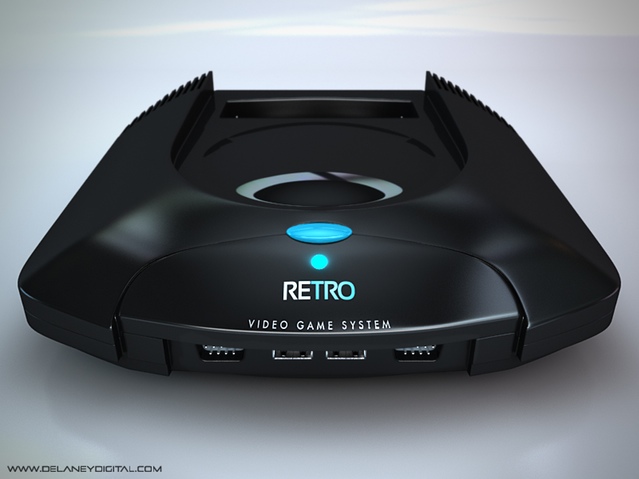

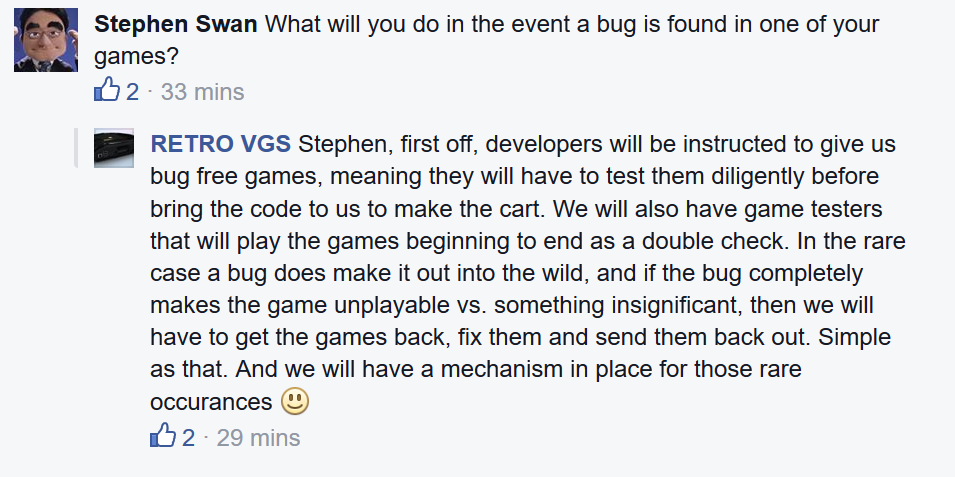
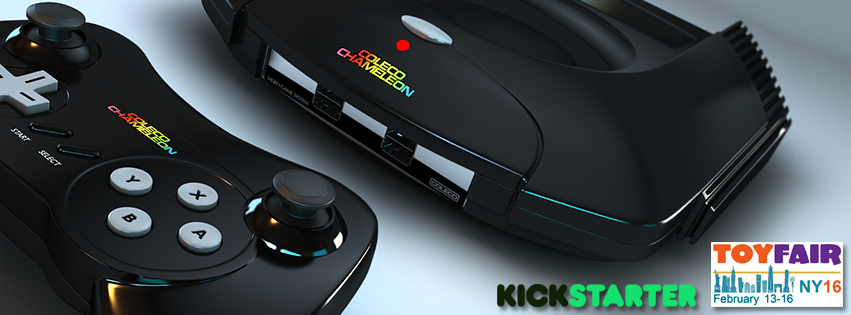
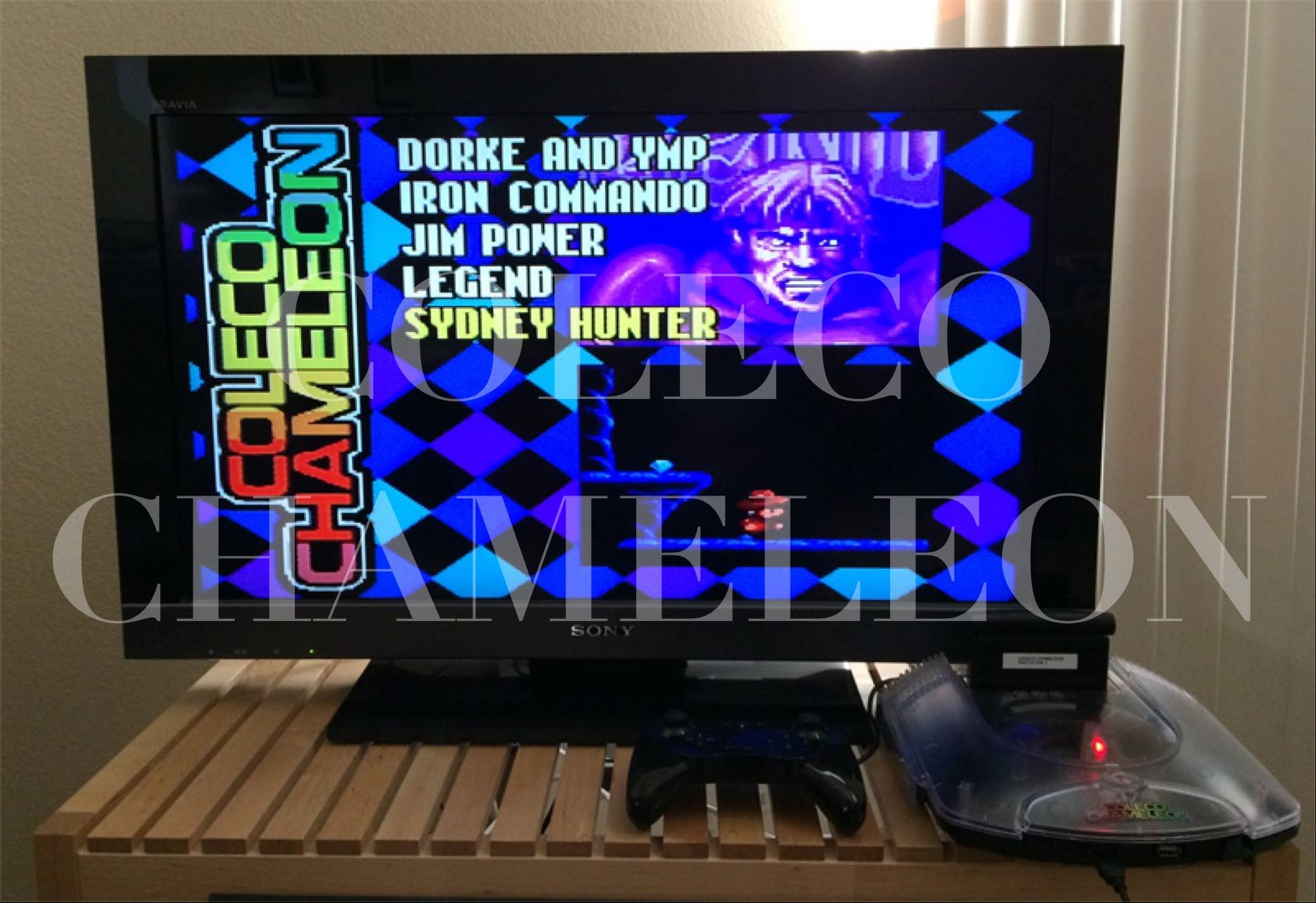
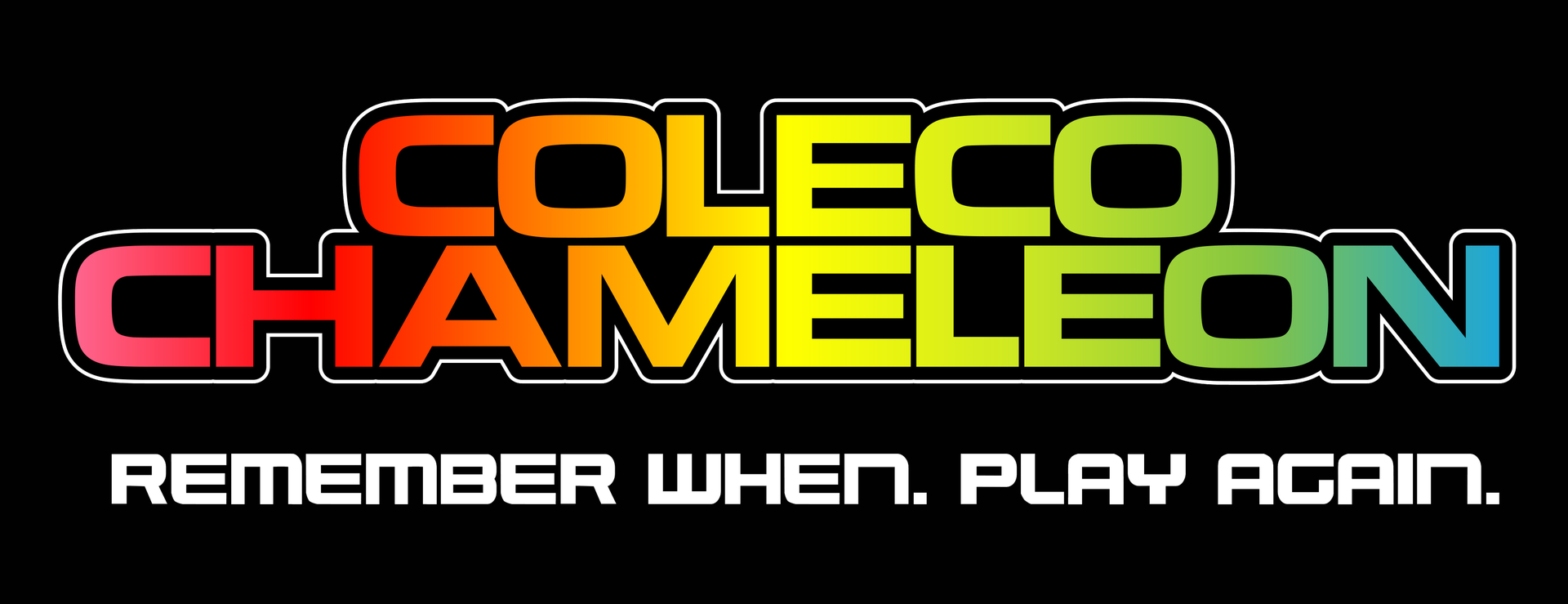



I know this might be a bit late, But a update to this could be pretty cool, as recently Retro Magazine had been sold to a new owner (and it had gone to patreon)